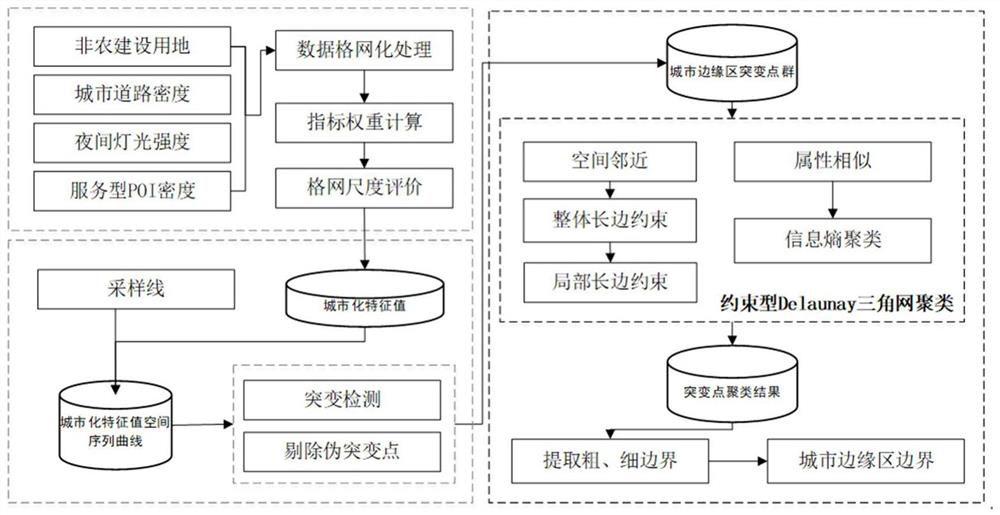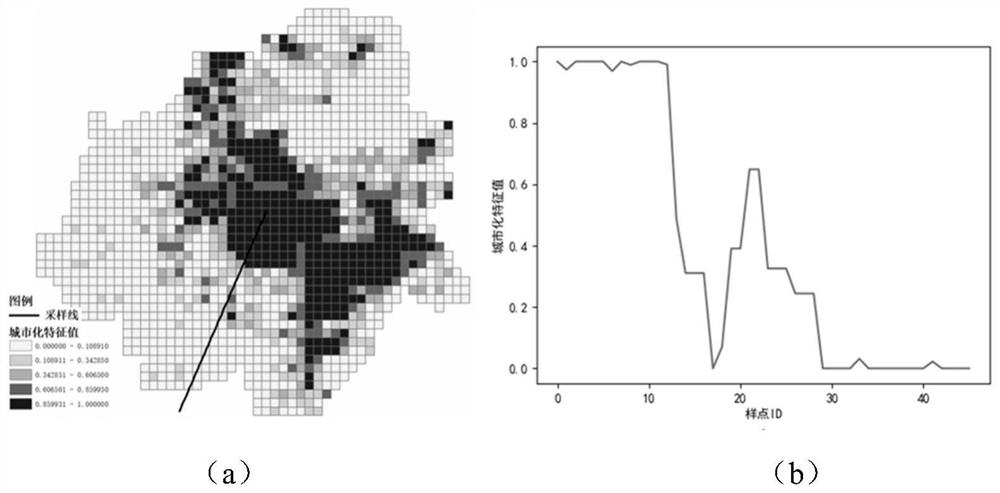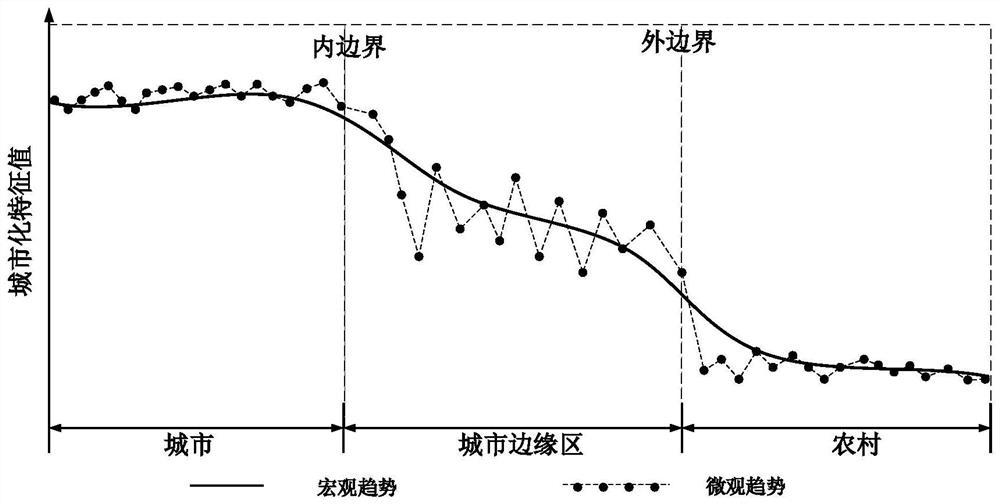Urban marginal area identification method and system
A recognition method and edge area technology, applied in character and pattern recognition, instruments, computer components, etc., can solve problems such as strong subjectivity, lack of objective mathematical methods, and disregard of mutation point noise, etc., to avoid human subjective factors The influence of the characteristics, the expression of features is fine and objective, and the effect of improving the recognition accuracy
- Summary
- Abstract
- Description
- Claims
- Application Information
AI Technical Summary
Problems solved by technology
Method used
Image
Examples
Embodiment Construction
[0059] Below in conjunction with specific embodiment, further illustrate the present invention, should be understood that these embodiments are only used to illustrate the present invention and are not intended to limit the scope of the present invention, after having read the present invention, those skilled in the art will understand various equivalent forms of the present invention All modifications fall within the scope defined by the appended claims of the present application.
[0060] Such as figure 1 As shown, a method for identifying urban fringe areas with hollow features disclosed in the embodiment of the present invention mainly includes the following steps:
[0061] Step 1. Data grid processing
[0062] Obtain the land use data, urban road data, night light data, and POI (Point of Interest) data of the year to be studied, and perform grid processing. Among them, the land use data comes from relevant departments such as remote sensing image interpretation or plann...
PUM
 Login to View More
Login to View More Abstract
Description
Claims
Application Information
 Login to View More
Login to View More - R&D
- Intellectual Property
- Life Sciences
- Materials
- Tech Scout
- Unparalleled Data Quality
- Higher Quality Content
- 60% Fewer Hallucinations
Browse by: Latest US Patents, China's latest patents, Technical Efficacy Thesaurus, Application Domain, Technology Topic, Popular Technical Reports.
© 2025 PatSnap. All rights reserved.Legal|Privacy policy|Modern Slavery Act Transparency Statement|Sitemap|About US| Contact US: help@patsnap.com



